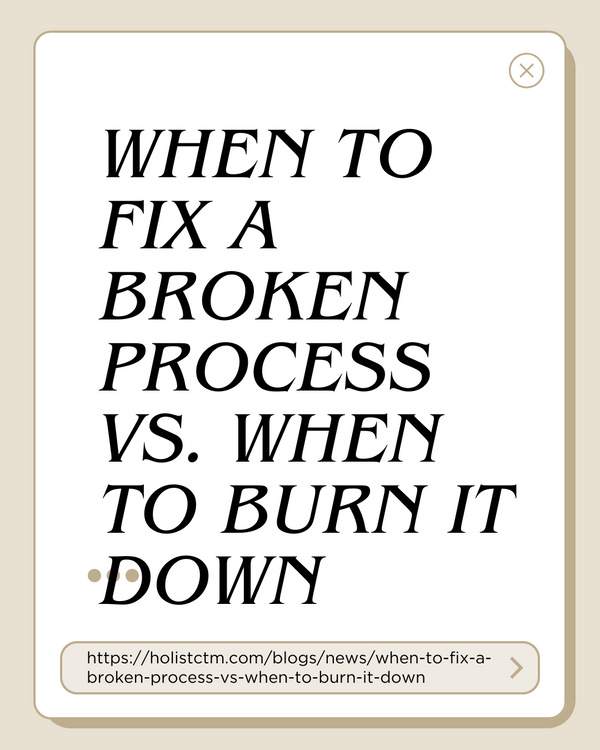Latest from our blog
Discover insights, updates, and helpful content.

Many property managers today juggle multiple apps – one for bookings, one for payments, another for maintenance – leading to tedious end-of-month reconciliations. As one expert describes, “Reservations happen in one system. Payments in another. Maintenance records in a third. Then at the end of the month, it all gets exported, imported, reconciled, and teams hope for the best”. This fragmented approach isn’t sustainable, often resulting in double entry errors and hours of manual busywork. Without a unified system, every update (a booking change, a vendor invoice, etc.) requires duplicate data entry across systems, creating countless opportunities for something to get lost, entered twice, or miscategorized. Worse yet, all that time spent untangling disparate data is “time not spent growing your business” – a critical issue for property management companies trying to scale.
Modern property tech tools should talk to each other. Rather than patching together siloed apps with tedious exports and imports, an integrated approach lets data flow seamlessly. Holistc’s focus on AI-driven workflow automation emphasizes connecting your software stack so you can eliminate these “duct-taped workflows”. For instance, Buildium – a popular property management platform – offers both an open API and a marketplace of apps to enable connections with many other services. In fact, Buildium’s Open API allows users to “sync your data from Buildium with other software, creating customized integrations” tailored to your business needs. By leveraging such built-in integrations (or using no-code tools like Zapier), property managers can achieve a unified system where information flows automatically between tools. The result is less manual busywork and more reliable data: operational changes in one system will update others without human intervention.
Here are a few real-world automation workflows a property management firm could implement by integrating Buildium with other tools:
Maintenance Requests → Task Management: When a tenant submits a maintenance request in Buildium, automatically create a corresponding task in a work-tracking tool like Monday.com for the maintenance team. This ensures no request slips through the cracks. (In fact, Buildium’s marketplace features a LaunchEngine add-on that “bridges Buildium and Monday.com to create a unified powerhouse for property management”, streamlining task tracking across both platforms.)
Leasing Inquiries → Showings Scheduler: Connect Buildium with a showing-scheduler app such as ShowMojo. New leasing inquiries captured on your website or CRM can flow into Buildium and trigger ShowMojo to handle tour scheduling. Buildium’s integration with ShowMojo covers the leasing process “from the initial prospect inquiry to in-person and self-guided tours”, so staff don’t have to manually coordinate viewing appointments.
Rent Payments → Accounting Sync: If you use QuickBooks (or another accounting system) for general ledger accounting, integrate it with Buildium’s rent and expense data. With an integration or a Zapier workflow, every time rent is recorded as paid in Buildium, the transaction automatically logs in QuickBooks (or updates a Google Sheets ledger) with no human data entry. This prevents the month-end crunch where “it all gets exported, imported, reconciled” by hand, and instead keeps your books continually in sync.
Owner Reports → Cloud Drive: Automate owner reporting by connecting Buildium to cloud storage and email. For example, when Buildium generates monthly owner statements, a workflow could automatically save each PDF to a designated Google Drive folder and email the file (or a download link) to the respective property owner. This way, owners receive their statements instantly, and your team avoids the repetitive task of manually pulling reports and sending emails every month.
By integrating their tools, property managers can reclaim countless hours of work and significantly reduce errors. For example, one property management company (Mike Z Rentals in Florida) found that after switching to an integrated system, they “removed 60+ hours of manual work each month”. Imagine freeing up roughly two weeks’ worth of labor every month – staff can focus on improving tenant services and growing the portfolio instead of fighting spreadsheets.
Integration doesn’t just save time; it also boosts accuracy and compliance. When systems sync in real time, any operational change automatically reflects across accounting, maintenance logs, and reports. This means no more inconsistencies between platforms or data falling through the cracks. Eliminating data silos greatly reduces mistakes (like missed work orders or misapplied payments) that stem from manual double-entry. In short, a connected proptech stack yields faster workflows, fewer errors, and more time to scale your business to new heights.
Discover insights, updates, and helpful content.




